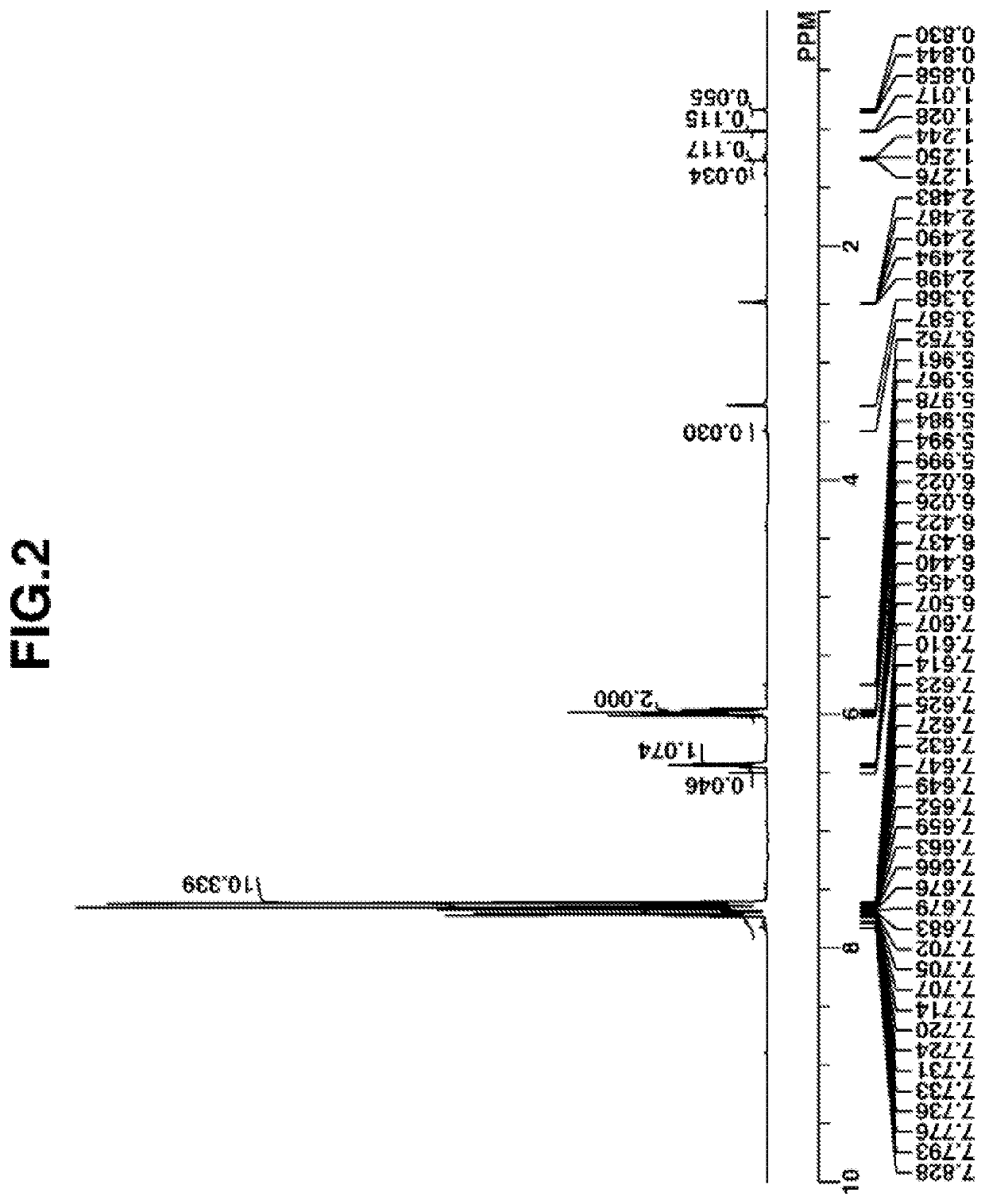Chemically amplified negative resist composition and resist pattern forming process
a negative resist and composition technology, applied in the field of chemical amplifying negative resist composition and resist pattern forming process, can solve the problems of acid that has a significant impact on resolution and remains, and achieve the effect of minimal ler, minimal line width variation, and high resolution
- Summary
- Abstract
- Description
- Claims
- Application Information
AI Technical Summary
Benefits of technology
Problems solved by technology
Method used
Image
Examples
synthesis example 1
Synthesis of 2-(diphenylsulfonio)phenolate Q-1
synthesis example 1-1
Synthesis of (2-tert-butoxyphenyl)diphenylsulfonium chloride (Intermediate A)
[0183]
[0184]A Grignard reagent was prepared in THF by the standard method using 2.6 g of magnesium and 16 g of 2-tert-butoxychlorobenzene. To the Grignard reagent were added 6.1 g of diphenyl sulfoxide and 27 g of THF. Then 9.8 g of chlorotrimethylsilane was added dropwise at room temperature to the solution, which was aged for 3 hours. After aging, a saturated ammonium chloride aqueous solution was added to quench the reaction, and 100 g of water was added to the reaction solution, which was washed with diisopropyl ether, yielding an aqueous solution of the target compound, (2-tert-butoxyphenyl)diphenylsulfonium chloride, designated Intermediate A. The compound was fed to the next step without isolation.
synthesis example 1-2
Synthesis of (2-hydroxyphenyl)diphenylsulfonium tosylate (Intermediate B)
[0185]
[0186]To the entire amount of the Intermediate A solution, 6.8 g of p-toluenesulfonic acid monohydrate, 6.1 g of 25 wt % sodium hydroxide aqueous solution, 30 g of water and 150 g of methylene chloride were added and stirred for 30 minutes. The organic layer was taken out, washed with water, and concentrated under reduced pressure to remove methylene chloride, yielding a crude form of (2-tert-butoxyphenyl)diphenylsulfonium tosylate. To the crude form were added 6 g of p-toluenesulfonic acid monohydrate and 50 g of methanol. The solution was held at 80° C. for 14 hours for deprotection reaction. The reaction solution was concentrated at 60° C. under reduced pressure, methylene chloride was added, and the organic layer was washed with ultrapure water. After washing, the organic layer was concentrated under reduced pressure. To the residue, tert-butyl methyl ether was added for recrystallization. The resulti...
PUM
| Property | Measurement | Unit |
|---|---|---|
| feature size | aaaaa | aaaaa |
| wavelength | aaaaa | aaaaa |
| wavelength | aaaaa | aaaaa |
Abstract
Description
Claims
Application Information
 Login to View More
Login to View More - R&D
- Intellectual Property
- Life Sciences
- Materials
- Tech Scout
- Unparalleled Data Quality
- Higher Quality Content
- 60% Fewer Hallucinations
Browse by: Latest US Patents, China's latest patents, Technical Efficacy Thesaurus, Application Domain, Technology Topic, Popular Technical Reports.
© 2025 PatSnap. All rights reserved.Legal|Privacy policy|Modern Slavery Act Transparency Statement|Sitemap|About US| Contact US: help@patsnap.com



